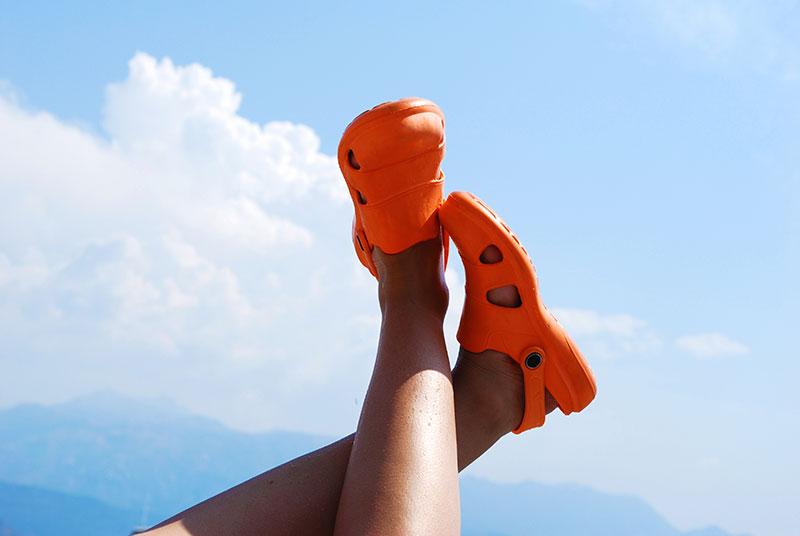
What Is EVA?
Share
When you buy shoes, do you ever think about what they are made of? Sometimes people pay attention to the material used in the upper, or the top part of the shoe. That is typically made of a material like leather or canvas. But most people don’t think about the shoe’s sole and what that is made of. Let’s take a look at what the material EVA is and why you might want it in your shoes.

You've probably encountered EVA in other parts of your life since it's used in everything from baby toys to home decor. EVA stands for Ethylene Vinyl Acetate, which is a composite of two plastics, vinyl acetate and ethylene. When it comes to using EVA in shoes, it is typically used in the midsole, though some manufacturers use it for the insole as well. The sole of your shoe is not usually made of one layer but of at least three layers. The insole is the layer on the inside of the shoe that your foot rests on. The outsole is the very bottom of the sole that touches the ground. The midsole is the layer in between, and it provides a lot of the cushioning for the shoe.
Because of its ability to be easily molded and formed, withstand pressure, and take on a variety of colors, EVA is a popular material that can be found in cheap sneakers and high-end running shoes alike. So if EVA is so great, why do your shoes get old and wear out over time? Athletes especially understand that shoes lose their structure and have to be replaced somewhat regularly. Just like any other foam material, EVA has very tiny air bubbles throughout that aid it’s capacity to absorb shock but these air bubbles are susceptible to compression and heat. The typical downward forces that act on the body, made especially intensive by high impact sports like running, will eventually deteriorate the integrity of the EVA foam and the midsole will need to be replaced. Because the midsole is part of the interior of the shoe’s sole and can’t be removed, this means that the entire shoe will need to be replaced.

Despite its relatively short lifespan, EVA is still one of the best materials for shoes because it is lightweight, absorbs shock, and is easy to work with. Manufacturers are also looking into new ways to make EVA last longer, such as different molding processes that allow it to hold its structure under greater pressure. While you can get very technical and look for shoes with a specific foam density, most people will just decide on which shoes to buy the old way: by trying them on and seeing how they feel. If the shoes feel light, cushioned, and comfortable, chances are, they have a layer of EVA in the sole.